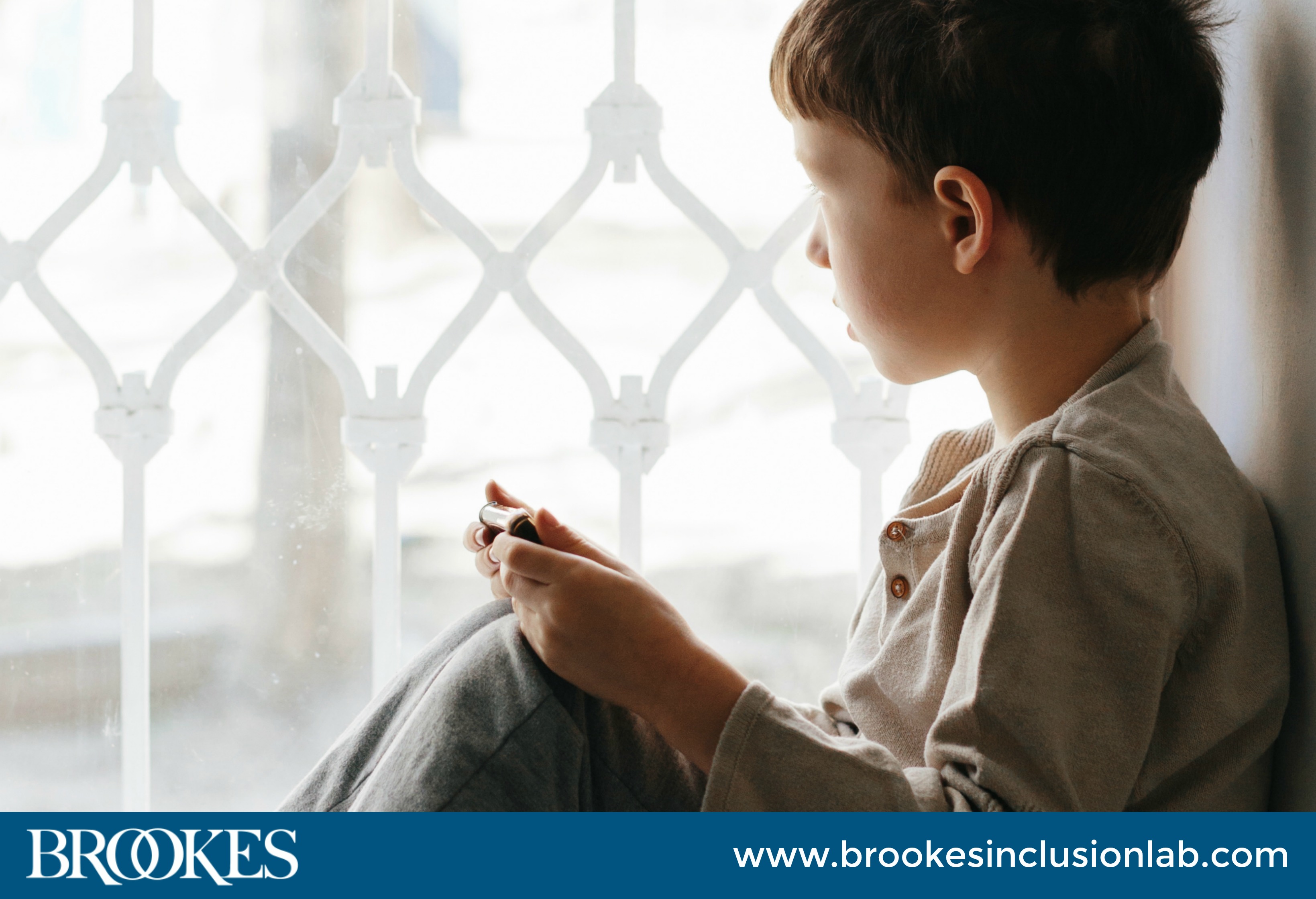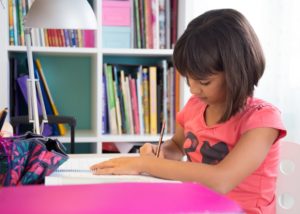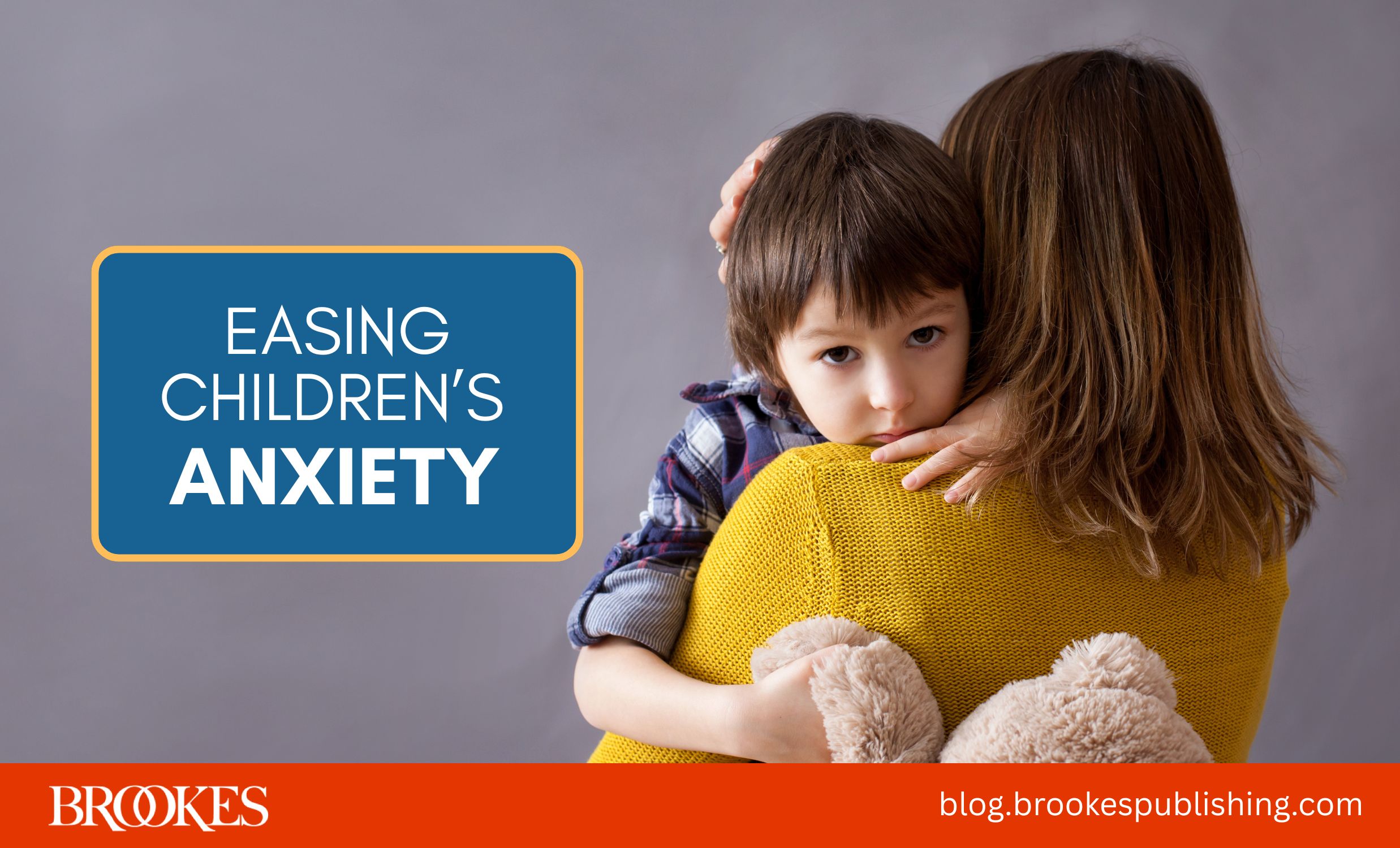Teaching and Parenting in Troubled Times: 6 Brookes Authors Share Their Best Advice
March 23, 2020
Inclusion Lab readers: You’re in our thoughts as we navigate this unprecedented new era together. How is everyone holding up these days? These are tough, scary times for everyone, and we hope you’re taking good care and staying safe and healthy.
We know you’re probably inundated with the information everyone’s sharing right now, but if you feel like you could use some words of encouragement and a few practical tips from the experts, today’s post is for you. We asked a group of our expert authors to share their best pieces of advice for educators and parents who are working with and caring for children in these troubled times, and today we’re sharing their words of wisdom with our readers.
First up, Julie Causton, co-author of the Inclusive School Practices series, shares some comforting words for parents and teachers who may be struggling to decide how much structure and how many assignments they should be giving right now. (If you’d like these words in “permission slip” format to print as a reminder or share with others, you can download a PDF of the slips for teachers and parents.)
 For all of us—teachers, parents, and children—this time is really a homecoming. Coming home to our families and coming home to ourselves. My opinion is, use these weeks to create a balance between self-growth activities (reading, baking, writing, drawing, painting, creating), movement and exercise (family walks, playing physical games, dance parties), and community growth activities (neighborhood clean-ups, offering up support, writing/drawing for someone who needs some cheer). Most importantly, let kids design their own schedules (within your parameters), and give yourself permission to do the same.
For all of us—teachers, parents, and children—this time is really a homecoming. Coming home to our families and coming home to ourselves. My opinion is, use these weeks to create a balance between self-growth activities (reading, baking, writing, drawing, painting, creating), movement and exercise (family walks, playing physical games, dance parties), and community growth activities (neighborhood clean-ups, offering up support, writing/drawing for someone who needs some cheer). Most importantly, let kids design their own schedules (within your parameters), and give yourself permission to do the same.
Enjoy the quiet luxury of boredom—you may remember that feeling from childhood, but it’s something that many in this generation have not experienced. Boredom is a rich garden for creativity to bloom. It is okay if children are not doing packets of work from school.
This break will likely help us all return to some of the most important aspects of living, loving, and learning—none of which have ever been found in a packet of worksheets. Sending you big love and warm inclusive wishes!
Paula Kluth, author of many renowned books on inclusive education (including You’re Going to Love This Kid! and Just Give Him the Whale!) offers her guidance on how to support students with complex support needs and use fascinations to personalize teaching and learning. (Thursday’s post will feature Paula’s tips on how to maintain reassuring connections with students. For more Paula Kluth content, follow her at @PaulaKluth on Twitter or see her Facebook page to get daily tips on supporting learning during school closures.)
If you are working with students with more complex support needs, you will need to do more sharing, showing, and presenting as the learner may not be able to engage formally with the material or have a reliable way to communicate. You can show pictures, read, tell stories, review any material that may have been explored at home, or lead the learner in a brain break or wellness exercise. You can adapt this recommendation if you only have a minute or two, of course, as even a quick conversation is sure to ease tension and keep students feeling more tightly tethered to school, to learning, and—most importantly—to their teachers.
 There may be no better time to follow the lead of students than in the virtual “classroom.” We have to rely on learners to stay motivated, follow through on tasks, and complete assignments. One way to encourage these habits is to teach using special interests or fascinations. If you are teaching an entire class of students, you can do this by offering lots of choices in how students complete work. For instance, a teacher I know asked his ninth graders to write persuasive essays on whether or not cell phones should be allowed in classrooms. One student with a passion for all things related to politics was not interested in this topic and instead was granted permission to write his paper on why teens should be allowed to vote at the age of 16.
There may be no better time to follow the lead of students than in the virtual “classroom.” We have to rely on learners to stay motivated, follow through on tasks, and complete assignments. One way to encourage these habits is to teach using special interests or fascinations. If you are teaching an entire class of students, you can do this by offering lots of choices in how students complete work. For instance, a teacher I know asked his ninth graders to write persuasive essays on whether or not cell phones should be allowed in classrooms. One student with a passion for all things related to politics was not interested in this topic and instead was granted permission to write his paper on why teens should be allowed to vote at the age of 16.
If you are not responsible for an entire classroom and are instructing only a few students at this time, you have even more latitude with this recommendation. Consider using a fascination as the centerpiece of learning at this time. Ask students what they want to learn. If possible, help them design personal projects to study interesting questions. Connect schoolwork to special interests. If the student loves dinosaurs, assign informational text and fiction on that topic. Create dinosaur word problems. Let the learner explore the Smithsonian Museum of Natural History. For more on using fascinations to teach and learn, see my YouTube video on this topic.
Nicole Eredics, author of Inclusion in Action, offers these guidelines for creating a home learning environment that encourages learning and minimizes distractions:
 If your kids are like mine, they pull up a chair at the kitchen table to do their nightly homework. Meanwhile, the television is on, the dishwasher is running, and the dog barks for attention. However, now that schools are closed and students are asked to learn at home, parents might want consider creating a more appropriate learning space that will minimize distractions and maximize learning. To begin, find a space where your child will feel comfortable sitting and working. Then, think about the noise and volume in the area. Can it be controlled? Can the television be removed or a door shut? In addition to noise, consider taking down any visual distractions that might draw your child’s attention such as photos and artwork. Can a blind be closed or a curtain drawn in case your street gets too busy? Finally, ensure that the lighting is appropriate. Low lighting can be a problem, but so can glaring overhead lights. Most importantly, remember that learning spaces can have a significant impact on a child’s ability to focus and learn, so monitor their progress and don’t be afraid to make changes when necessary!
If your kids are like mine, they pull up a chair at the kitchen table to do their nightly homework. Meanwhile, the television is on, the dishwasher is running, and the dog barks for attention. However, now that schools are closed and students are asked to learn at home, parents might want consider creating a more appropriate learning space that will minimize distractions and maximize learning. To begin, find a space where your child will feel comfortable sitting and working. Then, think about the noise and volume in the area. Can it be controlled? Can the television be removed or a door shut? In addition to noise, consider taking down any visual distractions that might draw your child’s attention such as photos and artwork. Can a blind be closed or a curtain drawn in case your street gets too busy? Finally, ensure that the lighting is appropriate. Low lighting can be a problem, but so can glaring overhead lights. Most importantly, remember that learning spaces can have a significant impact on a child’s ability to focus and learn, so monitor their progress and don’t be afraid to make changes when necessary!
Cindy Collier, who published The Special Educator’s Toolkit and The Data Collection Toolkit as Cindy Golden, emphasizes the value of experiential teaching and offers ideas for helping students learn from current events:
Experiential teaching is a method of creating an environment in which children become participants—not just observers—in the learning experience. Due to the crisis we are all facing today, our children and students are experiencing something foreign to all of us. We feel like we are muddling through just trying to survive. But teaching and learning can occur even in the worst circumstances. Experiences provide a rich environment for learning that will not only be generalized but also retained.
Don’t try to swim upstream—go with the flow of the events happening around us. Take each opportunity to teach. Use the experiences to add “tools” to our children’s toolbox. Teach them:
 math lessons through cooking with what you have in the pantry
math lessons through cooking with what you have in the pantry- science lessons through hygiene guidelines
- basic first aid and anatomy
- appropriate ways of dealing with stress
- history and civics through learning how our community bands together for the betterment of the population as a whole
- reading and writing lessons through current events
- social skills through efforts to help your neighbors
Math, reading, writing, history, and community social awareness can be immersed within the experiences our children face today.
Elizabeth Potts, co-author of the books How to Co-Teach and Launching a Career in Special Education, sent in some helpful tips on how you can stay connected with your co-teacher and other colleagues during school closures:
Like you probably are, I’m finding it hard to concentrate, especially with the pull of news and social media and all of the uncertainty. But having specific tasks to focus on, specific things to check off the list, is providing me with direction and keeping me off social media—which, aside from staying home, is the healthiest thing we can do for ourselves right now.
 Connect with other teachers in your schools (co-teachers, perhaps?) not just to share resources and lighten the workload, but also to be mindful about including time for “hallway conversations” that you’re missing out on by not seeing each other. In the coming weeks, even the most introverted of us will miss the drop-by discussions with co-workers and the rambling stories our students tell. Create opportunities to insert normalcy. You might want to:
Connect with other teachers in your schools (co-teachers, perhaps?) not just to share resources and lighten the workload, but also to be mindful about including time for “hallway conversations” that you’re missing out on by not seeing each other. In the coming weeks, even the most introverted of us will miss the drop-by discussions with co-workers and the rambling stories our students tell. Create opportunities to insert normalcy. You might want to:
- Send out a “meeting” link on Zoom or Google hangouts (or similar) and set up a coffee time with co-teachers or your subject or grade-level team. Or establish remote “office hours” where anyone (friends, students, parents of your students, co-workers) can drop in and talk.
- If you are co-teaching, continue to co-plan to ensure that students’ needs are met. Remember, IEPs still have to be followed, and though the special educator may take point, both of you should work together.
- Use Google docs or another shared file system as a collaborative tool. You can even work on it simultaneously.
- Have students work “together” asynchronously and share their knowledge—like jigsawing. Consider doing some projects that can be easily differentiated (for interest, materials available, or proficiency) and then have students share the content.
- Consider splitting co-teaching tasks differently than you might have in the past if you’re now juggling many duties at home. Maybe it would work best to split the task of giving feedback by week or every few days to give each of you a rotating lighter load. Maybe tasks you used to share, you now designate one person to do.
- Be ready to adapt if one of you (or someone in your family) gets sick. If you continue to be in constant communication, this should be a seamless transition, giving the teacher who needs to heal time to recover without worrying about school.
- Support each other!
And, if you are in the sandwich generation and are in a house with your parents and kids, hope that your kids are as smart as mine—while doing science experiments yesterday she kept my dad from setting off a rocket in the house. The kids are going to be okay.
Beverley Johns, author of Your Classroom Guide to Special Education Law, offers some tips on keeping children calm, occupied, and engaged in learning while schools are closed:
As we all face the pandemic and the fear and anxiety associated with it, we must work together to keep our children involved in constructive activities such as exercise, mindfulness activities, art projects, and much more. We may have a tendency to allow children to entertain themselves with their electronic devices which can cause more isolation for children at a time when they need to be actively engaged and learning from us. Here are some key things to do:
 Limit the amount of time that children can spend on their electronic devices.
Limit the amount of time that children can spend on their electronic devices.- Plan a schedule of activities that are diverse and include a mixture of active and sedentary activities.
- Learn a new skill together such as how to make a scrapbook, how to write a poem, weaving or knitting or cross stitch.
- Engage in a quiet reading time, modeling reading as a fun activity.
- Create a service project. Children feel better when they can help others. While we are in a period of social distancing, there are still some service projects that children can engage in. They can call someone who is homebound to cheer them up, or they can make something for others. A teacher I know is having her students write letters or make cards for those in nursing homes or others who might be cheered by a note.
This is a time for us to become closer with children by giving more of our time to them, rather than less. Our quality time will make a difference and help everyone turn this fearful time into one that refocuses us on what is really important.
***
Thanks to our experts for sharing their advice today! Tune in on Thursday, when we’ll feature tips from more authors on how to take care of children’s social-emotional needs during school closures and social distancing. Be sure to check out our remote learning resource roundup if you’re looking for some good information and activities, and stay tuned for announcements about our upcoming series of (free!) “coffee chats” with our experts.




Write a Comment
Your email address will not be published. Required fields are marked *
Post a Comment